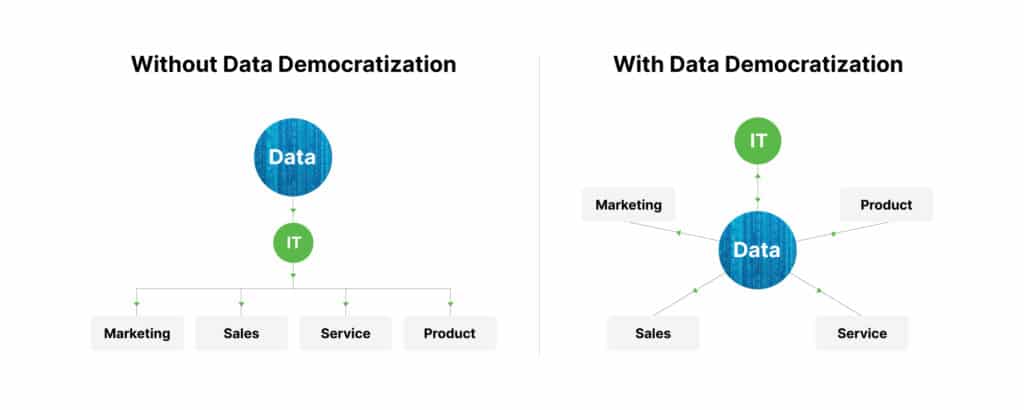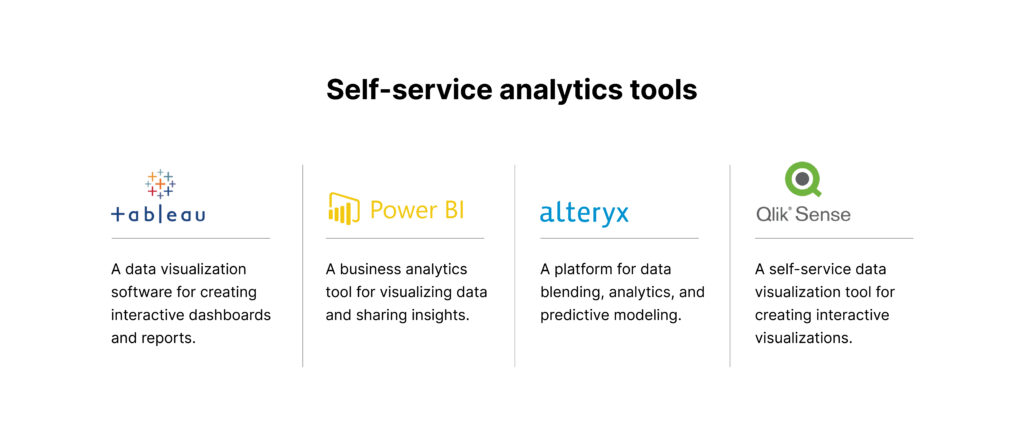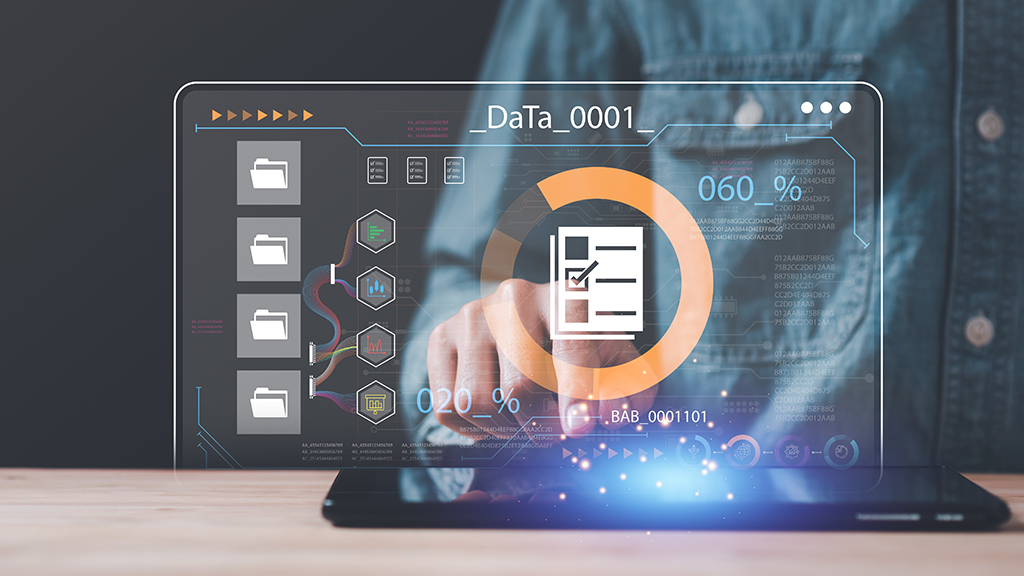
Data & AI Evangelist

Principal Data Architect
Subscribe to the newsletter
For an organization to successfully implement a data democratization strategy to make informed decisions, it must have a data-driven mindset or culture. That’s why businesses that make most of the decisions based on their data are 58% more likely to beat their revenue targets than those who don’t, as reported by Forrester Consulting. Another report by McKinsey showed that data-driven businesses are 23 times more likely to outperform their competitors clearly in terms of new customer acquisition.
But the question remains: how does data democratization help foster a data-driven culture for improved decision-making in a business world filled with uncertainty? In this blog, we will explore what data democratization is and how data-driven businesses can make the most out of it for driving innovation.
Data-driven culture: The key to modern business success
As numerous companies acknowledge data’s value in informing strategic decisions, studies indicate that those embracing data-driven approaches yield 5-6% higher outcomes and productivity levels. Forrester also estimates that organizations who prioritize data-driven strategies experience an average annual growth of over 30%.
Considering the impact of data reshaping the global market, organizations are becoming increasingly aware of embracing a data-driven environment to stay agile. A data-driven culture within an organization is one in which data is valued and integrated into every aspect of decision-making and operations.
Today, the increasingly accessible data for making smart and informed decisions is no longer merely a recommended practice. It is becoming a new norm within the business community to propel business growth to unprecedented heights. However, transitioning from no data to “data-driven” is not something that will happen overnight. Rather, businesses should remain steadfast in their efforts to cultivate a data-driven culture where data is considered a fundamental component of making decisions.
Here’s how your business can create a data-driven culture within an organization:
- Commitment from top leadership
- Ensure data accessibility
- Promote data literacy
- Encourage data-driven decisions
- Implement robust data quality management tools
All in all, a data-driven culture that is increasingly acknowledged for strategic decision making requires a holistic approach. However, this not only involves implementing the right technology and tools but also fostering a mindset that values data. And that mindset is data democratization.
Now, what is data democratization?
The need for data democratization marks a significant shift in how organizations approach data utilization and decision-making processes. Historically, data was often siloed within specific departments or controlled by a select group of individuals with specialized skills. This created a bottleneck at the gateway to the data and slowed progress.
Through 2025, 80% of organizations seeking to scale digital business will fail because they don’t take a modern approach to data and analytics governance, as stated by Gartner’s.
To eliminate this barrier, organizations needed open access to the data they needed with no gateway. That’s when data-driven organizations embraced data democratization to break down barriers by providing widespread access to data across all levels of the organization.
The most common concept of data democratization is universal data access. Although data accessibility is the foundation of data democratization, it represents only a fraction of a broader concept. By definition,
“Data democratization is an ongoing process that allows everyone within an organization, irrespective of their technical knowledge base, to access, use and talk about the data they need with ease.”
This means giving access to the entire organization without any limitation – from C-suites to managers and front-line employees. However, when the relevant data becomes accessible to the right teams at the right time, it breaks down silos between the teams, promotes collaboration, and facilitates decision-making.
Therefore, for true data democratization, organizations must focus on three core components of data democracy.
- Data governance
- Data literacy
- User-friendly analytics tools
Data governance ensures quality, security, and compliance, which is fundamental for effective data management. Data literacy equips teams to understand, analyze, and interpret data for informed decisions. Analytics tools enable easy data access, visualization, and analysis without extensive technical skills.

Data democratization is a top trend for building a robust strategy in 2024.
Architectural approaches for data democratization
Data democratization begins with a well-designed data architecture. Traditional “data at rest” architectures designed for static data storage are not suitable for data democratization. Today’s businesses require a fit-for-purpose approach that facilitates real-time access and data fluidity. Whether the data is distributed across cloud or on-premises environments, data democratization architecture should be flexible, agile, integrated, and secure to use data and AI at scale.
Below are several examples of data democratization architectural designs that are highly compatible with the concept of democratizing data access.
1. Data Fabric
Data Fabric is a centralized data architecture that pulls together data in various formats from legacy systems, data lakes, data warehouses, and SQL databases to provide a holistic view of business performance. The data fabric ensures seamless data exchange among different platforms, whether stored on-premises, in the cloud, or a hybrid setting. This adaptability ensures that data remains integrated and easily accessible, regardless of its format or where it is located.
2. Data Mesh
Data Mesh is a decentralized data architecture that organizes data by a specific business domain. Unlike centralized storage systems, Data Mesh promotes domain-specific and self-service infrastructure. A Data Mesh defines data as a product across multiple decentralized repositories, each given its own domain for managing its data pipeline.
3. Data Lake
Data Lake is another prominent architecture that holds immense potential for data democratization. Its architecture allows organizations to access, analyze, and leverage data, regardless of the format (structured, semi-structured, unstructured), for informed decision-making. This architecture also facilitates self-service analytics and collaborative exploration and analysis of data, without relying on IT or data professionals.
Read more: Choosing your data journey: Data Fabric vs. Data Mesh
Data democratization and self-service Business Intelligence
Data democratization is synonymous with self-service Business Intelligence, allowing business users to access, explore, analyze, and visualize data without relying on experts. As the name implies, self-service reduces the conventional barrier of waiting for data requests to be fulfilled, which delays decision-making.
This need for more agile and quicker decision-making through democratization led companies to adopt self-service analytics tools. These user-friendly tools allow business users to explore data and derive valuable insights within minutes so everyone can take advantage of data-driven decisions. However, it is important to note that all self-service BI tools can be considered data democratization tools, but not all tools for data democratization are solely focused on self-service BI.

Investing in user-friendly analytics tools offers several benefits:
- Improves decision-making capabilities
- Accelerates the data analysis processes
- Makes data democratization more accessible and effective for everyone
According to Gartner’s research, organizations that invest in self-service analytics tools experience greater and swifter returns on investment. This is because they face fewer constraints by the availability of data engineers, data scientists, and data analysts.
Steps to create a winning data democratization strategy
Given the advantages of fostering a data-driven culture, such as real-time insights, enhanced efficiency, and boosted productivity, organizations must have a robust data democratization strategy to reach data democratization goals. Here is a detailed breakdown of creating a winning data democratization strategy for your business.
Step 1: Access the current data landscape
Begin by conducting a thorough assessment of the organization’s current data landscape. This includes evaluating existing data sources, storage systems, and governance practices. Identify any bottlenecks or challenges hindering data access and utilization. Understanding the current state of your organization will provide valuable insights into areas that require improvement.
Step 2: Define business and data objectives
Once you have assessed your current data landscape, define clear objectives and priorities your business needs for data democratization. These objectives should align with your organization’s goals. Whether you need to improve data accessibility or enhance decision-making processes, prioritize these objectives based on their potential impact.
Step 3: Develop a governance framework
Establish a robust governance framework that outlines the rules, processes, and responsibilities for managing data across your organization. This framework should address key aspects such as data access controls, security measures, data quality standards, and compliance requirements.
By establishing clear guidelines and procedures, you can ensure that data democratization efforts are carried out responsibly and competently.
Step 4: Build a technological foundation
Establishing a solid technological foundation is central to a successful data democratization strategy. Consider investing in self-service analytics tools and an appropriate data infrastructure, such as Data Lake, Data Mesh, or Data Fabric, aligning with your organization’s goals and structure.
Regardless of the tools you choose, make sure these tools are user-friendly and accessible to everyone across different departments and skill levels.
Step 5: Promote data literacy and cultural change
Lastly, promote data literacy and drive organizational cultural change to foster a data-driven mindset. Offer training programs to enhance data literacy skills among employees, enabling them to access, analyze, and interpret data confidently. Encourage transparency and reward team members who embrace data-driven decision-making and contribute to the success of the democratization of data analytics.
Bottomline
Data democratization is a long-term process as it relies on data literacy. At the very least, everyone within an organization, irrespective of their role, should be given the opportunity to make meaningful contributions to their data-related projects. However, before you leap into democratization, scrutinize what objectives and expected outcomes align with your strategy.
If you need assistance developing and implementing a successful data democratization strategy, contact us at marketing@confiz.com. We excel in data and AI services, helping your organization toward data-driven success.



